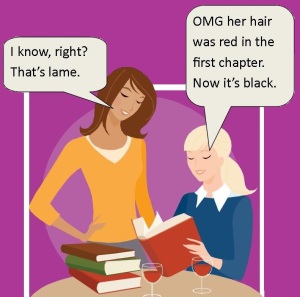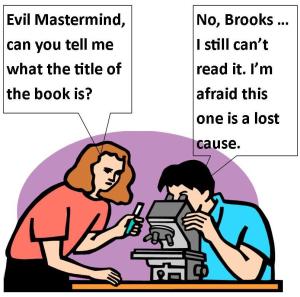 Let’s do a little thought experiment. Pick your favorite classic of literature. One of those books you were forced to read years ago in school. Make it something old enough to be in the public domain. I’m partial to A Tale of Two Cities myself. Your choice is probably different. Maybe Pride and Prejudice, Tom Sawyer, or even (God forbid) Moby Dick (just call me bored stiff). Now pick something more modern, but still a classic you might have read in school from fifty or a hundred years ago. My choice is The Old Man and the Sea. Maybe you prefer Catch-22, something by Faulkner (The Sound and the Fury or As I Lay Dying are a couple possibilities). Or if you prefer a book with a little more heat and your school district was much more enlightened than mine you might choose Lady Chatterly’s Lover.
Let’s do a little thought experiment. Pick your favorite classic of literature. One of those books you were forced to read years ago in school. Make it something old enough to be in the public domain. I’m partial to A Tale of Two Cities myself. Your choice is probably different. Maybe Pride and Prejudice, Tom Sawyer, or even (God forbid) Moby Dick (just call me bored stiff). Now pick something more modern, but still a classic you might have read in school from fifty or a hundred years ago. My choice is The Old Man and the Sea. Maybe you prefer Catch-22, something by Faulkner (The Sound and the Fury or As I Lay Dying are a couple possibilities). Or if you prefer a book with a little more heat and your school district was much more enlightened than mine you might choose Lady Chatterly’s Lover.
What are your picks?
All of the books I’ve listed, and I assume those you picked if you didn’t like my suggestions, have stood the test of time. Presumably they were commercially successful. If nothing else, each has sold well over the years with sales to schools and libraries. Now imagine the books you picked hadn’t been published for whatever reason, but the final fully-edited manuscript was discovered and published by the author’s heirs today. We’ll also imagine they published it using a pen name so there isn’t a ton of hype about author X’s undiscovered book. What do you think the odds are that the book would sell? How would the critics react? What do you think the reader reviews on Amazon would look like? Continue reading “Classic or Commercial?”

 So, you’re editing the last part of your novel and mention a character’s sister named Annie. Or was it Annabeth? Or did you give in to that wild idea of changing the sister’s name to Rasheeda? You can’t remember, because you only mentioned the sister once–in chapter three. So, what do you do now? You could do a search for all three names. Or you could turn to your story bible.
So, you’re editing the last part of your novel and mention a character’s sister named Annie. Or was it Annabeth? Or did you give in to that wild idea of changing the sister’s name to Rasheeda? You can’t remember, because you only mentioned the sister once–in chapter three. So, what do you do now? You could do a search for all three names. Or you could turn to your story bible. As you are aware, the most common issue we see with books during the vetting process is an unclear or confusing book description. The second most common issue: unreadable titles on book covers in thumbnail size.
As you are aware, the most common issue we see with books during the vetting process is an unclear or confusing book description. The second most common issue: unreadable titles on book covers in thumbnail size. Over the past year, we’ve run a lot of excellent tutorials here at Indies Unlimited. Many times, when dealing with queries, I’ll provide links to these tutorials to help authors who aren’t quite certain how to do things. It seemed to me that New Year’s Eve would be a good time to recap the tutorials which I seem to reference the most.
Over the past year, we’ve run a lot of excellent tutorials here at Indies Unlimited. Many times, when dealing with queries, I’ll provide links to these tutorials to help authors who aren’t quite certain how to do things. It seemed to me that New Year’s Eve would be a good time to recap the tutorials which I seem to reference the most.